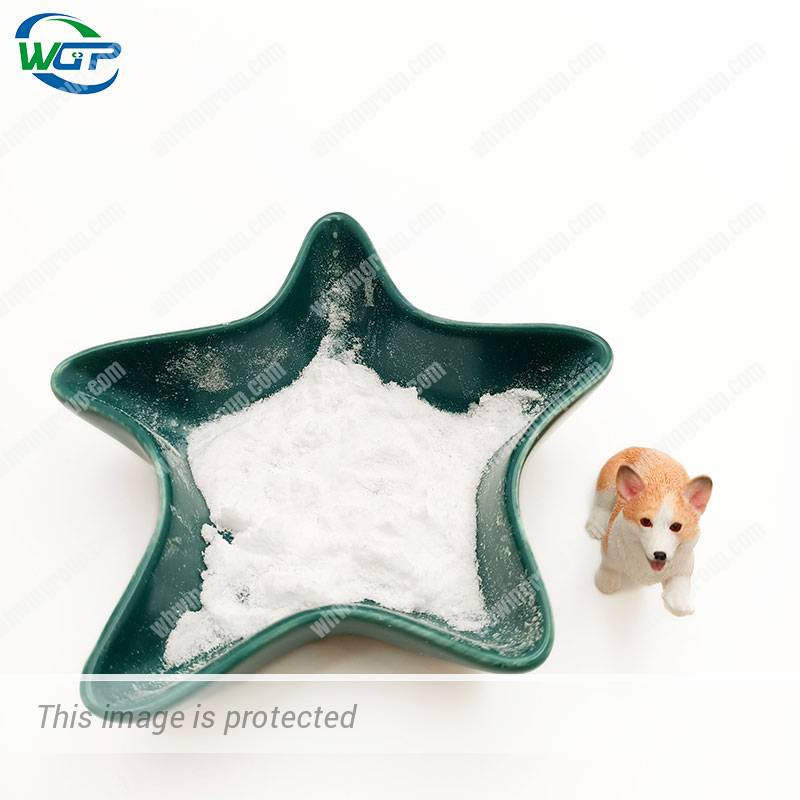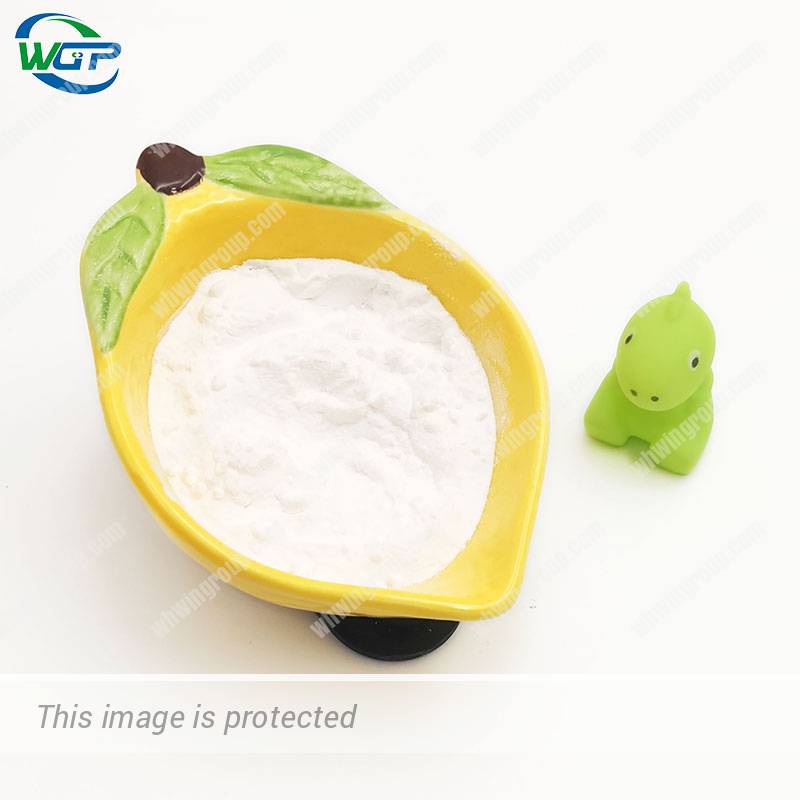Omeprazole sodium
CAS:95510-70-6
MF:C17H20N3NaO3S
ChEBI: Omeprazole sodium is a member of benzimidazoles and a sulfoxide.
- Description
- Additional information
Description
Omeprazole sodium CAS 95510-70-6 Product Information
| Product Name: | Omeprazole sodium |
| Synonyms: | sodium 5-methoxy-2-[(4-methoxy-3,5-dimethyl-pyridin-2-yl)methylsulfinyl]benzoimidazole;OMEPRAZOLE SODIUM;5-methoxy-2-(((4-methoxy-3,5-dimethyl-2-pyridinyl)methyl)sulfinyl)-1h-benzimidazole sodium salt;Omeprazole powder/pellets/sodium;Omeprazole, sodium salt;odiuM 5-Methoxy-2-[(4-Methoxy-3,5-diMethyl-pyridin-2-yl)Methylsulfinyl]benzoiMidazole;1H-BenziMidazole, 6-Methoxy-2-[[(4-Methoxy-3,5-diMethyl-2-pyridinyl)Methyl]sulfinyl]-, sodiuM salt (1:1);omeprazole sodium:sodium 5-methoxy-2-((4-methoxy-3,5-dimethyl-pyridin-2-yl)methylsulfinyl)benzoIMIDAZOLE |
| CAS NO: | 95510-70-6 |
| Molecular Weight: | 369.41 |
| Molecular Formula: | C17H20N3NaO3S |
| Solubility: | Freely soluble in water and in ethanol (96 per cent), soluble in propylene glycol, very slightly soluble in methylene chloride. |
| Melting point: | >165°C (dec.) |
| Storage: | under inert gas (nitrogen or Argon) at 2-8°C |
| Appearance: | White to Off-White Solid |
omeprazole sodium bicarbonate
Omeprazole sodium bicarbonate is a combination medication that contains omeprazole and sodium bicarbonate. It is used to treat conditions related to excess stomach acid, such as gastroesophageal reflux disease (GERD), gastric ulcers, and erosive esophagitis. Here’s some information about omeprazole sodium bicarbonate:
- Omeprazole: Omeprazole is a proton pump inhibitor (PPI) that works by reducing the production of stomach acid. It blocks the enzyme responsible for acid secretion in the stomach, thereby decreasing the acidity levels.
- Sodium bicarbonate: Sodium bicarbonate, also known as baking soda, is an antacid that helps to neutralize stomach acid. It works by increasing the pH of the stomach, which can provide relief from heartburn and indigestion.
- Combination therapy: Omeprazole sodium bicarbonate combines the acid-reducing effects of omeprazole with the acid-neutralizing properties of sodium bicarbonate. This combination can provide more immediate relief from symptoms and help maintain an optimal gastric pH balance.
- Dosage forms: Omeprazole sodium bicarbonate is available in various dosage forms, including capsules and powders for oral suspension. These formulations are typically taken by mouth, usually before a meal.
- Indications: Omeprazole sodium bicarbonate is used to treat conditions caused by excess stomach acid, such as GERD, gastric ulcers, and erosive esophagitis. It can help alleviate symptoms like heartburn, regurgitation, and stomach pain.
- Over-the-counter availability: In some countries, omeprazole sodium bicarbonate may be available over the counter (OTC) at lower strengths for short-term use. However, it’s important to consult a healthcare professional before starting any OTC medication or for long-term use.
pantoprazole sodium vs omeprazole
Pantoprazole sodium and omeprazole are both medications used to reduce stomach acid production and treat conditions related to excessive acid production. While they belong to the same class of drugs (proton pump inhibitors), there are some differences between pantoprazole sodium and omeprazole. Here’s a comparison:
Potency: Pantoprazole sodium is considered to be more potent in reducing stomach acid compared to omeprazole. It provides a more profound and sustained acid suppression.
Onset of action: Omeprazole generally has a faster onset of action compared to pantoprazole sodium. Omeprazole may start reducing stomach acid production within one hour of administration, while pantoprazole sodium may take longer to show its effects.
Metabolism: Omeprazole is primarily metabolized by the liver, while pantoprazole sodium is metabolized in both the liver and the kidneys. This difference may be relevant for individuals with impaired liver or kidney function.
Interactions: Omeprazole has a higher potential for drug interactions compared to pantoprazole sodium. Omeprazole can interfere with the metabolism of certain medications, leading to altered blood levels of those drugs. Pantoprazole sodium generally has fewer interactions with other medications.
Dosage frequency: Omeprazole is often taken once daily, while pantoprazole sodium is available in both once-daily and twice-daily dosing options. The choice of dosing frequency may depend on the specific condition being treated and the individual’s response to the medication.
Indications: Both pantoprazole sodium and omeprazole are used for similar indications, such as gastroesophageal reflux disease (GERD), gastric ulcers, and erosive esophagitis. However, the specific choice of medication may depend on factors such as individual patient response, cost, availability, and physician preference.
Additional information
| Solubility | Freely soluble in water and in ethanol (96 per cent), soluble in propylene glycol, very slightly soluble in methylene chloride. |
|---|---|
| Color | White |
| Form | Powder |









Reviews
There are no reviews yet.